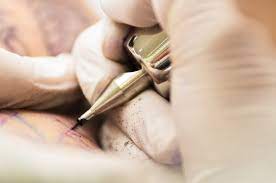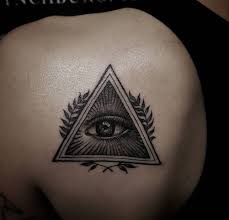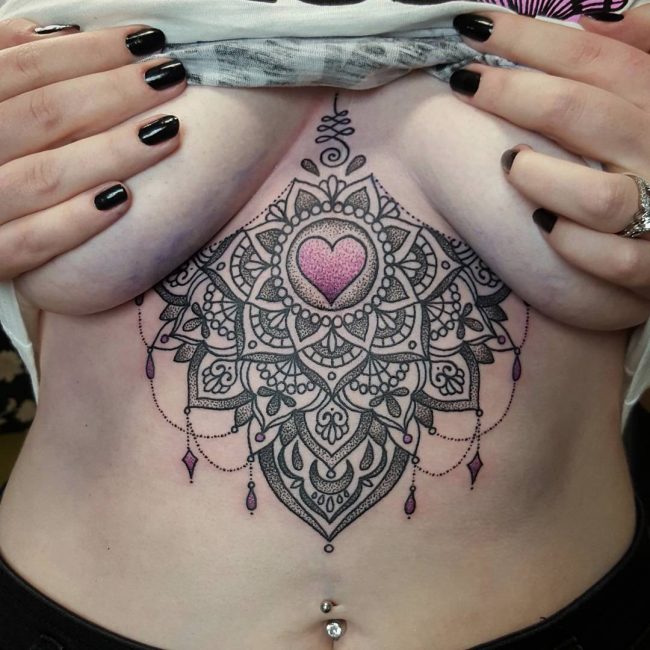
Tattoo needles puncture the outer skin layer (epidermis) and drag pigment into the deeper layer of skin (dermis), creating vibrant colors and intricate details in tattoos.
Ink Penetration
Tattoo needles are designed to deposit ink approximately one-sixteenth of an inch deep into the skin, ensuring that the pigment bypasses the outermost layer of skin that sheds daily. This prevents the tattoo from quickly fading.
Tattooers use various methods to determine the proper depth of the needle. One way visually inspects the needle tip, while another involves feeling the skin with the needle tips to ensure adequate penetration.
Ink Flow
When the needle punctures the skin, it triggers the immune system, which sends cells called macrophages to the wound site to consume any dye particles in the bloodstream. The ink is then taken up by other skin cells (fibroblasts) and locked into place by dermis cells for permanent color changes.
Liners have one to seven needles soldered onto a needle bar with equal gaps between each tip, providing precise tattoo marks. Loose/shader needle groupings have more open spaces between hands, allowing for increased ink flow, and are great for shading purposes.
Ink Pressure
Tattoo needles are connected and soldered onto a needle bar and attached to a machine for the up and down motion. Tattoo artists must ensure the needles penetrate the skin at the correct depth to bypass the epidermis layer, as any ink injected there would fade quickly.
Different needle groupings, such as flat tattoo needles, require careful handling due to their thin side-to-side gaps. They are effective for smooth gradation and filling colors but may be challenging for beginners.
Ink Resistance
Tattoo needles puncture the skin at a specific spot, around 1.5 to 2 millimeters below the epidermis layer, to deposit pigment precisely where desired. The needle’s shape, length, and point play a significant role in the tattooing process.
Regular needles have an even thickness from side to side, while magnum or flat shader needles feature thicker tips. Tight needle groupings create less open space for ink flow, increasing the trauma to the skin. Using the tattoo machine at steep angles with intimate groups of needles may cause bouncing instead of proper penetration, which can trap ink in the top layers of the skin.

